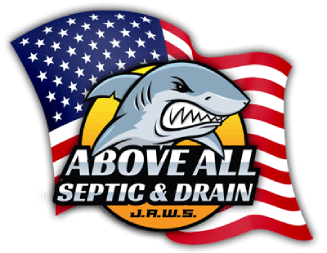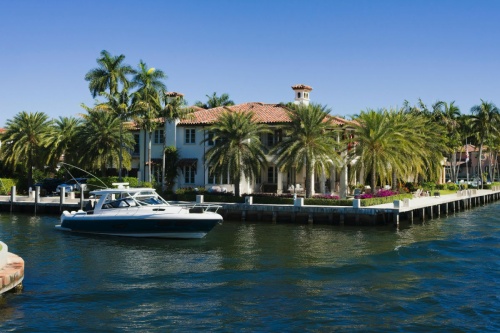Anyone who’s tried to dig a swimming pool in Florida has most likely learned the hard truth about our state’s water table—you don’t have to go very deep before you hit water. That same reality that makes backyard pools a challenge also creates serious complications for septic system design. When groundwater sits just a few feet below the surface, traditional septic approaches that work perfectly fine in other states suddenly become recipes for expensive problems and environmental headaches.
Engineering Solutions for Challenging Soil Conditions
Florida’s soil conditions throw septic designers some real curveballs. Much of the state is situated on sandy soil that drains so quickly that it barely gives wastewater time to be filtered adequately before it reaches the groundwater. Then you have areas with clay-heavy soil that won’t drain at all, creating backups and system failures. Add in limestone bedrock that can appear unexpectedly shallow, and you start to understand why cookie-cutter septic solutions don’t commonly work in Florida.
The key to handling these challenging conditions lies in understanding what each soil type demands from your system design. Sandy soils found throughout coastal and central Florida drain too well for standard systems. Water moves through sand so quickly that harmful bacteria and contaminants don’t have sufficient time to be filtered out naturally. The solution? You need to either find ways to slow down the water so it has more time to be cleaned, or you require more advanced filtering equipment that can handle the job in less time.
Clay soil is a whole different nightmare. In parts of Florida, you’ll run into clay that seems more like trying to drain water through concrete. When your septic effluent reaches clay, it simply sits, with nowhere to go. Effluent can’t percolate through the soil naturally; it backs up in the system or surfaces in your yard—neither scenario ends well for homeowners or the environment.
Modern engineering approaches address these challenges directly through thorough site evaluation and tailored system design. Soil percolation tests help determine precisely how fast water moves through your specific soil conditions. Deep hole testing reveals the seasonal high water table level and identifies any restrictive layers, such as hardpan clay or bedrock, which could interfere with proper system function.
According to these findings, engineers can specify the optimal combination of technologies, including enhanced filtration systems and pressure distribution networks, to ensure that effluent is dispersed across challenging soil conditions.
Understanding Florida’s Unique Water Table Challenges
Florida’s water table behaves differently from almost anywhere else in the country. We’re sitting on top of what’s an underground ocean that’s incredibly close to the surface, sometimes just three to six feet down. Because the water’s so close, everything affects your septic system: rainy seasons, hurricanes, even the tides if you’re near the coast.
Here’s where things get tricky with Florida’s wet seasons. During Florida’s wet season, groundwater levels can rise several feet, potentially reaching the levels of drain fields and causing system failures. When the water table becomes too close to septic components, proper treatment becomes impossible because there’s not enough unsaturated soil to filter the effluent before it reaches the groundwater.
You can see evidence of these water table challenges throughout Florida’s residential development patterns. Ever wonder why Florida homes typically don’t have basements? It’s because you’d need at least eight feet of depth to build one safely, and the fluctuating water table makes that impractical in most areas.
If you’re living near the coast, you have to contend with tides and storm surges that can push water levels even higher when you least expect it. And if your property is close to springs, lakes, or rivers? Good luck predicting what the water table will do from one year to the next—it’s in a state of disorder.
The bottom line is that you cannot simply guess about water patterns when designing a septic system. Engineers must account not only for current conditions, but also for seasonal highs that may occur every few years during particularly wet periods.
Alternative System Technologies for High Water Table Areas
When conventional septic systems won’t work due to high water tables, several alternative technologies can provide effective solutions. Mound systems represent one of the most common approaches for challenging Florida conditions. These systems essentially create an artificial hill of sand and gravel that elevates the drain field above problematic groundwater levels.
An adequately designed mound system includes multiple layers of specific materials that provide enhanced treatment as effluent moves through the engineered soil profile. The system requires a pump to move effluent from the septic tank up into the elevated drain field, then relies on gravity for treatment as the wastewater filters down through the mound materials.
Aerobic treatment units (ATUs) offer another solution that’s particularly well-suited to Florida conditions. These systems essentially pump air into the mix to stimulate the bacteria, allowing them to work faster and more efficiently, resulting in much cleaner water. Because the water has already been cleaned up so well, you don’t need as much soil to finish the job, which is perfect when dealing with shallow soil or water that’s practically at ground level.
Drip irrigation systems work somewhat like a sprinkler system, except they spread treated wastewater in tiny, controlled amounts over a much larger area. This setup works great when you don’t have a lot of room to work with or your soil is giving you problems, because the water has more time to soak in properly without having to dig deeply.
Chamber systems replace the heavy gravel with lightweight plastic boxes, which are a lifesaver when dealing with high groundwater. What’s nice about these systems is that they roll with the punches better—if you suddenly use a lot more water one week or the water table fluctuates wildly during the rainy season, this type of system handles it without throwing a fit.
Maintenance and Long-term Performance Considerations
Florida’s challenging conditions make regular maintenance crucial for the longevity of septic systems. The state’s year-round biological activity, combined with heavy seasonal rains and high water tables, creates an environment where minor problems can quickly become expensive disasters.
Pump systems used in mound and other alternative technologies require particular attention. When pumps fail during heavy rain periods, effluent can back up quickly since there’s typically less reserve capacity in the system. Regular pump inspections and having backup plans for power outages become essential.
The rapid bacterial activity in Florida’s warm climate means that septic tanks may need more frequent pumping than in cooler states. Heavy rainfall during hurricane season can also overwhelm systems that are already operating near capacity due to high water tables.
Monitoring system performance becomes especially important with alternative technologies. Many systems include alarm systems that alert homeowners to potential problems before they become serious failures. Understanding these warning signs and responding quickly can prevent costly repairs and environmental damage.
Water conservation practices take on added importance in areas with high water tables since systems have less capacity to handle excess flows. During wet seasons when groundwater levels are already elevated, reducing household water usage helps to prevent system overload.
Professional inspections should focus not just on the septic tank, but on evaluating the entire system’s performance under local conditions. This includes checking for proper effluent treatment, monitoring groundwater impacts, and ensuring that seasonal water table fluctuations do not compromise system function.[/vc_column_text][/vc_column][/vc_row]

